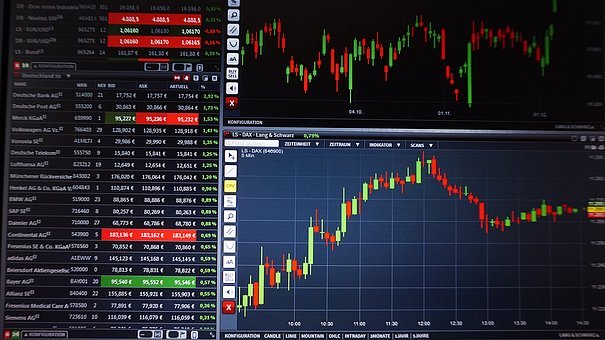B to C debt collection costs in France a nightmarish situation. The B to C debt collection costs in France were the subject of a new judicial decision dated September 26, 2019. This decision concerns the collection costs charged to individuals by the collection agencies. The decision of the Administrative Court is as follows. The collection of damages from the debtor must, except to qualify as deceptive marketing practices, be preceded by a justification of the nature and amount of the damage alleged. According to the judges the only fact for the administration to note that neither the proof of bad faith, nor that of the reality and the quantum of the damage, were reported, was sufficient to reclassify the damages and interests in debt collection costs constituting deceptive marketing practices. The burden of proof of the bad faith of the debtor and the loss suffered is on the creditor. Failing this, the collection firm is exposed to heavy criminal penalties for deceptive marketing practices. The context of this decision is related to the practices of some French recovery firms that try to make debtors pay damages by referring to Article 1231-6 of the Civil Code. The root of the problem is related to the small amount of the claims in the B to C files. To make their actions profitable some collection firms do not hesitate to claim substantial damages from the debtors to cover the debt collection costs incurred. The Court’s decision confirms that in practice and for debtors with a private person status, it is in fact impossible to claim recovery costs except to risk very heavy penalties. How to produce receipts for debts of a few tens of euros. And it is equally true that not paying small bills for an individual is a real lawless area, the debtor not in fact risk anything to pay his bills when he sings, if he decides to pay. No one is going to expose the debt collection costs of proceedings for a claim of a few tens of euros.
Tag Archives: #invoice
Hedge Fund the rise of one whom nothing predestined to become the best manager of history.
Hedge Fund the rise of one whom nothing predestined to become the best manager of history “The man who solved the riddle of the markets” Wall Street Journal’s Greg Zuckerman’s book is the book that everyone is talking about on Wall Street. He portrays the rise of one whom nothing predestined to become the best manager of history. The mathematician Jim Simons, whose fortune exceeds 23 billion dollars, is at the origin of a UFO: the Medallion fund. Since 1988, this quantitative hedge fund has recorded an average annual gain of 66.1%, reduced to 39% after deducting its commissions. Over 20 years (1985-2004), George Soros’ hedge fund (Quantum fund) had an average annual return of 20.2%. Prize of excellence Aware of its value, the Medallion Hedge Fund has taken the highest rates in the industry, 5% of assets and 44% of profits generated through its performance. Hedge Fund typically take between 1.5% and 2% of assets and 20% of profits. Given its success, this Hedge Fund no longer accepted money from investors since 1993. In 2005, it was reserved exclusively for employees of the Hedge Fund. For Simons, this fund was to remain relatively small, less than $ 10 billion, to continue to perform well. The founder is aware of the law of diminishing returns in the financial world: the more the capital is important, the more a manager is struggling to remain as efficient.
Inconceivable In an interview with “Institutional Investor” in November 2000, the founder of Renaissance said: “Today we manage $ 4 billion, perhaps $ 7 to $ 8 billion in the future. But 70 billion, never! It is inconceivable. I am 62 years old and in the next three years I would like to pass the torch. Today the Hedge Fund manages $ 110 billion, and Jim Simons retired in 2010 while remaining involved in his company, being non-executive chairman. The Medallion has been a fantastic Hedge Fund appeal and advertising product, which has launched other funds such as Renaissance equities. He managed the increase in his assets and the change in size of his fund. “Make money when I sleep” In 1978, Jim Simons left his position as professor of mathematics at Stony Brook University to found his first Limroy Hedge Fund. Like other traders of the time, he tries to anticipate the decisions of the Federal Reserve but without much success. Yet at the time, he consulted the opinion of an economist, Alan Greenspan, who would become the president of the Fed between 1986 and 2007. His poor results prompt him to seek a trading system without human interference. “I do not want to worry about markets every minute. I want models that make me earn money when I sleep. He then embarked on quantitative management in the futures markets, particularly commodities. It speculates on potatoes, oil or pig carcasses but again the yields are random. The Hedge Fund, Renaissance Technologies, which was born in 1982, decided to move up a gear and began to build systematic and rigorous quantitative management. “There are movements and configurations in the markets that are not ‘visible to the naked eye’ by traders, but Renaissance wanted to exploit these anomalies in a systematic and rigorous way,” says Greg Zuckerman. Grey matter The fund is progressively recruiting the best mathematicians, astrophysicists, linguists, artificial intelligence specialists and computer scientists. It ensures their loyalty by allowing them to invest their bonuses in the Medallion Hedge Fund, where the average investment of employees is now around $ 50 million. Those who leave the company are subject to very strict confidentiality agreements and a non-competition clause over a very long period. It is not possible that they go into another Hedge Fund to disclose the secrets of the company.
The “home culture” of Renaissance, the antithesis of that of Hedge Fund of the time, was in three words: humility, patience, work. No star manager took positions according to his “instinct”, a word banned internally. His traders had to follow the signals of mathematical models and never take personal initiative. In fact, very few Wall Street professionals have been recruited by Renaissance who prefers to hire IBM alumni. The Medallion fund also invested some of its money in about 40 Hedge Fund. It was a way to seize opportunities that he had not identified himself while benefiting from information feedback on the markets. Data gathering. To help it achieve good market forecasts, this Hedge Fund was one of the first to recognize the importance of having as much financial data as possible. He has collected very old and good course histories. Databases often contain errors that a statistics specialist was responsible for flushing out and correcting. The fund was collecting data that was not available to its competitors: one of the contributors regularly went to the New York Fed in Manhattan to manually collect prices on bonds that were not public. Anticipating the rise of “high frequency trading” (ultra-fast trading machines), the fund invests early in technology and computers at the forefront to increase the speed of its transactions and be the first to seize opportunities. The “gross” anomalies in the markets have long since disappeared and the fund must innovate to remain efficient. “The mathematics we use can be sophisticated,” he told Institutional Investors, “but we start from data analysis, we do not have preconceived notions.” “In our business, we want action, we appreciate a certain level of volatility. In 2008, the year of the financial crisis, the Medallion fund jumped by 80%.
Commercial Debt Collection and Business Bankruptcy
Commercial Debt Collection and business bankruptcy are sometimes linked. When a file arrives in a debt collection office, when the amount of the debt recovery is high and the debtor’s situation is fragile the debt collection actions sometimes lead to the bankruptcy of the debtor company. One can therefore ask the question of the relevance of the action of the debt collection company. In reality it is not the recovery actions that led to the bankruptcy of the company it was certainly already in a state of cessation of payment. The recovery procedures are only the drops of water that broke the camel’s back. The bankruptcy procedures are mostly long and dead-end, the creditor said unsecured (the one who has no security) having very little chance of recovering what is due to him. Should we in these cases renounce recovery actions? the answer is clearly no because only the one who acts keeps a chance to get his bills paid. One of the most common prevention tips was to tell suppliers to learn about the creditworthiness of their customers and keep their credit limit under supervision. This common-sense rule now faces new difficulties. Indeed, the secret of business in a world in full transparency becomes more and more opaque. In France, for example, it is now possible for small and medium-sized businesses to make their balance sheets confidential, whereas a few years ago this was considered a crime that could be prosecuted by the public prosecutor’s office. It is no longer uncommon to see companies that are well-rated by intelligence companies suddenly go bankrupt. One of the remedies to business bankruptcy losses is to adjust the credit limit to the size of the client. It is common to see the debt collection of important files that concern very small businesses. When a company is in trouble it will rush into the arms of a supplier ready to give it credit. The salesperson will be enthusiastic about developing his turnover and everyone will fall into the trap of supplier credit. It is the exporting companies that are setting up in a new country that are most likely to fall into this kind of trap. The losses and debt collection difficulties are in fact linked to the short-term profit policy which penalizes the exporters who have not planned a moderate development and supported by a substantial budget.
Mandatory information on the invoice in France
Mandatory information on the invoice in France
Changes effective October 1, 2019 In France from 1 October 2019 two new mentions will have to appear on the invoice: • the billing address if it is different from the delivery address • the purchase order number if it has been previously issued by the buyer. The sanctions for breach of the invoicing rules are reinforced by the introduction of a fine henceforth of an administrative nature. These new provisions result from the order of 24 April 2019 recasting Title IV of Book IV of the Code of Commerce relating to transparency, restrictive practices of competition and other prohibited practices. Invoice: the mandatory information in France reminder of the mandatory information existing before 01st October 2019. The date of the invoice Date on which the invoice is issued. The invoice number Unique number for each invoice and based on a chronological and continuous sequence, without “hole”, an invoice that can not be deleted. The numbering can possibly be done in separate series (for example with a prefix per year), if the conditions of exercise justify it. Date of sale or service Date on which the delivery of goods or service is made (or completed). The identity of the seller or service provider Legal name (or name and surname for an individual entrepreneur), address of the registered office, billing address (if different), Siren number or Siret, NAF code, legal form and registered capital (for companies), RCS number and city the registration registry (for traders), number in the trade register and registration department (for craftsmen). The identity of the buyer or customer Legal name (or name for an individual), address of the customer (except opposition for an individual), billing address if different, delivery address. Purchase order number When previously established by the buyer. VAT identification number VAT identification number of the seller and the business customer (only the latter is liable for VAT). These mentions are not mandatory for invoices whose amount excluding taxes is less than or equal to 150 €. The designation and counting of products and services rendered • Nature, brand, product reference. Materials provided and labor for the services. • Specific name, quantity, unit price excluding taxes and VAT rate, discounts and other possible rebates. The catalog price Unit price excluding VAT of goods sold or hourly rate excluding VAT of the services provided. The legally applicable VAT rate Especially if different VAT rates apply, they must appear clearly by lines. Discount Rebate, rebate, discount on the date of sale or service, excluding discount transactions not included on the invoice. Total amount to be paid excluding tax (HT) and all taxes included (TTC) About the payment The date or deadline for payment, the invoice, the penalty rates in the event of non-payment on the payment date entered on the invoice and the amount of the lump sum indemnity for recovery costs in case of late payment (40 €) . Invoice: the particulars Other details must be entered on the invoice in the following special cases: • The seller or service provider is a member of a management center or an approved association Add the mention: “Member of an approved association, payment by check and credit card is accepted”. • The seller has a VAT exemption scheme Add the mention “VAT not applicable, art. 293 B of the General Tax Code “. • The subcontractor no longer declares VAT is the main company that declares it (reverse charge VAT) Mention “self-liquidation of VAT”. Indicate that this is a “tax-free amount”. • Craftsmen or micro-entrepreneurs engaged in a craft activity for which professional insurance is compulsory Mention of the insurance taken out under the activity




